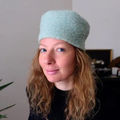Interviews
Lab to develop textiles for use in human body
03 Nov '09
3 min read
A laboratory to develop use of textiles for use in the human body has been set up jointly by Philadelphia and Drexel Universities. Among the equipments at the Biomedical Textile Structures Laboratory are a loom, braiders and a spinning machine to spin nano-fibres.
Researchers at the laboratory will develop textile tissues to repair tendons and ligaments and as vascular grafts. But the first target is to develop a cardiac patch that could be used to grow tissue in dead or damaged areas of the heart.
Divulging details, Peter Lelkes, Professor for tissue engineering and regenerative medicine in Drexel's School of Biomedical Engineering, Science and Health Systems said that the patch would be a textile template covered with a nanofiber mesh that stem cells could grow on.
The patch could have stem cells put on it before it is implanted or be designed to attract and activate stem cells already in the body and as the cells grow, the textile portion of the patch would dissolve, until only the cells are left, he added by saying.
The cardiac patch is a form of myocardial tissue engineering and is a relatively new and improving field of tissue engineering. It involves the use of a porous scaffold or dense patch of natural or synthetic polymeric material to aid in the re-growth of heart cells after damage to the heart is sustained
“The patch will serve as a beacon and send out the right signals that initiate the repair and this is what regenerative medicine is all about”, he explained by saying.
A jacquard shuttle loom with four shuttle positions and that can weave three-dimensional fabric manufactured by a German company with designs provided by both the Universities has been installed at the laboratory which cost US $500,000.
Researchers at the lab have been working on developing the cardiac patch since the last few months and now that the loom is available, they hope to in about six months time, be able to have a model of the patch ready for testing on animals.
According to Mr Lelkes, the industry should be interested in developing those types of applications because they would enable it to move from the traditional low-end and low-margin fabrics to high-tech, high-margin material.
The biomedical textile lab was set up at a cost of about $1 million from the nearly $1.26 million which the state provided to establish the Pennsylvania Advanced Textile Research and Innovation Center.
The Centre also supports research at the Laboratory for Engineered Human Protection, which is working with the Defense Department to develop clothing that protects wearers from chemicals; and the Institute for Textile and Apparel Product Safety, which examines the use of toxic materials in making fabric and clothing.
Researchers at the laboratory will develop textile tissues to repair tendons and ligaments and as vascular grafts. But the first target is to develop a cardiac patch that could be used to grow tissue in dead or damaged areas of the heart.
Divulging details, Peter Lelkes, Professor for tissue engineering and regenerative medicine in Drexel's School of Biomedical Engineering, Science and Health Systems said that the patch would be a textile template covered with a nanofiber mesh that stem cells could grow on.
The patch could have stem cells put on it before it is implanted or be designed to attract and activate stem cells already in the body and as the cells grow, the textile portion of the patch would dissolve, until only the cells are left, he added by saying.
The cardiac patch is a form of myocardial tissue engineering and is a relatively new and improving field of tissue engineering. It involves the use of a porous scaffold or dense patch of natural or synthetic polymeric material to aid in the re-growth of heart cells after damage to the heart is sustained
“The patch will serve as a beacon and send out the right signals that initiate the repair and this is what regenerative medicine is all about”, he explained by saying.
A jacquard shuttle loom with four shuttle positions and that can weave three-dimensional fabric manufactured by a German company with designs provided by both the Universities has been installed at the laboratory which cost US $500,000.
Researchers at the lab have been working on developing the cardiac patch since the last few months and now that the loom is available, they hope to in about six months time, be able to have a model of the patch ready for testing on animals.
According to Mr Lelkes, the industry should be interested in developing those types of applications because they would enable it to move from the traditional low-end and low-margin fabrics to high-tech, high-margin material.
The biomedical textile lab was set up at a cost of about $1 million from the nearly $1.26 million which the state provided to establish the Pennsylvania Advanced Textile Research and Innovation Center.
The Centre also supports research at the Laboratory for Engineered Human Protection, which is working with the Defense Department to develop clothing that protects wearers from chemicals; and the Institute for Textile and Apparel Product Safety, which examines the use of toxic materials in making fabric and clothing.
Fibre2fashion News Desk - India
Popular News
Leave your Comments
Editor’s Pick
































-Ltd..jpg?tr=w-120,h-60,c-at_max,cm-pad_resize,bg-ffffff)





.jpg?tr=w-120,h-60,c-at_max,cm-pad_resize,bg-ffffff)
.jpg?tr=w-120,h-60,c-at_max,cm-pad_resize,bg-ffffff)






